 There is no other competition in any sport that can compete with the World Cup in terms of sheer drama and excitement. Perhaps only the Summer Olympics can come close to offering the same sort of engagement from a global audience, but even that has some less interesting moments. Not everyone loves the Greco-Roman wrestling, for example.
There is no other competition in any sport that can compete with the World Cup in terms of sheer drama and excitement. Perhaps only the Summer Olympics can come close to offering the same sort of engagement from a global audience, but even that has some less interesting moments. Not everyone loves the Greco-Roman wrestling, for example.
Yet when it comes to the FIFA World Cup, every single match can matter. Even during the Group Stages, a seemingly unimportant game can have ramifications on where each team finishes within the group, which can itself affect which team plays which in the next round. From the moment the qualifying rounds are announced through to ninety minutes of the final, the World Cup dominates football around the globe.
It’s not uncommon for certain people to watch no football whatsoever, but become completely engrossed in the proceedings of the World Cup. That’s likely to be in part because there’s so much football that needs to be played, meaning that you can barely turn on the television without seeing a match taking place. There’s also the natural competitiveness that comes with a team representing your home nation. England v Germany, USA v Russia, North v South Korea – all of these are games that have happened over the years, reigniting old rivalries and allowing patriotic supporters to get involved in something they’d normally have no interest in. Little wonder, then, that each match gains an average of two-hundred million TV viewers and the final of the competition has nearly a billion viewers. On this page we’ll tell you everything you could want to know about the most glorious football tournament in existence as well as how to get the most out of betting on it.
Best World Cup Betting Sites

Every bookmaker worth their salt will pull the stops out for the World Cup and it can be very difficult to differentiate between sites with so many different promotions and features going on. Coral however consistently beat the crowd when it comes to the biggest events, in terms of offers and markets there really are few that can compete. Many brands model their own World Cup deals based on Coral so why not just go direct to them in the first place?
Expect to see the best free bets and clubs available, money back deals and free cash jackpot promotions. You will also find more price boosted lines with this betting site than any other and if you like to bet in advance they have excellent ante-post markets with good prices.

Ladbrokes are the oldest bookmaker still in business in the world, they are also one of the biggest in the world and are now part of the Entain group along with Coral and others. As you would expect from a brand with such history they are quite the colossus. If you are someone who is unsure of who to open an account with for the World Cup then you can’t go far wrong with Ladbrokes, they pretty much do everything.
Their size does make them a little faceless but at the same time there is no one who can rival them for market choice and depth. The resources available here mean they are also very good at rewarding existing customers and the parent group, Entain, have a very strong focus on responsible gambling.

If you are tired of the typical brands you usually see like the others on this page and you are looking for someone new to bet with for this edition of the World Cup then Parimatch are a great choice. They are fairly new to the UK having only launched here in 2020 but they are a well established European brand. What is enticing is the UK version of the site is run by BetVictor.
This means you effectively get everything BetVictor offer but under a different name. This is useful because most new sites cannot match the betting choice, range of offers, banking options and limits that the older bigger brands can offer, but Parimatch can. This is also a brand that loves its football, well over half of the deals they run are aimed at it. They also offer full cash out facilities, bet builders and all then mod cons you come to expect from a leading betting site.

More people will bet on the World Cup online with Bet365 than with any other betting company. They are the nations favourite for a reason too, because for most things to do with betting they cannot be beaten.
There is simply nothing this bookmaker is missing with incredible market depth, very good odds and some of the best long term regular customer retention deals to go along side.
This is a professional bookie with no gimmicks, they are all about providing an honest sportsbook with genuinely useful features. Maybe not so suited to those who like a little razzmatazz when they gamble but a must have for any serious punter interested in longer term value.
If you only ever sign up to one site this should be it, even if you are not getting the absolute best terms for a bet you can be certain you are getting close to the best at least.
World Cup Betting Guide
Whether you hardly ever place bet and are looking for some basic advice or you are a seasoned bettor looking for ways to get more out of the World Cup, we’ve got something here for you.
The World Cup is the biggest event in the world when it comes to gambling and this means there are lots of bookmakers and betting sites trying to compete for your business. If you bet cleverly and shop around, then you could really add some value to your predictions.
Sign Up Free Bets and Bonuses
 Online bookmakers have far more generous welcome promotions than you will ever find in betting shop. This isn’t a con, they can simply afford to reward new customers more online due to the lower overheads involved in running a website vs. a chain of shops.
Online bookmakers have far more generous welcome promotions than you will ever find in betting shop. This isn’t a con, they can simply afford to reward new customers more online due to the lower overheads involved in running a website vs. a chain of shops.
Sign up free bets and bonuses are given to customers to allow us to try out new gambling sites without needing to put up too much of our own money. Used well these welcome offers can however be hugely valuable for punters.
The main thing to think about is what type of offer you want to take. Free bets are good for single use bets and to get cash winnings, although typically the tokens can only be used once and will not be given with any winnings.
Bonuses on the other hand allow you to split up your stakes and you can even keep the bonus cash, but you will need to wager the bonus amount several times over to unlock it into real cash. Bonuses are therefore better for those that intend to place many bets and free bets for those that only want to place a few bets.
It is important to always read the terms of the offer. Critical factors include:
- Do you need to opt in or enter a promotional code to claim the offer?
- Is the promo cash awarded on registration, first deposit, first bet or settlement of first bet?
- How long after registration do you have to place any qualifying bets?
- Are there any minimum odds needed for the qualifying bet, are there any restricted markets or bet types?
- When awarded how long is the free bet or bonus valid for?
- Is the free bet or bonus restricted, does it have minimum or maximum odds, market or bet restrictions?
- When playing with promo cash are you prevented from utilising other existing customer promotions?
- How long is the free bet or promo fund balance valid for?
- If playing with a bonus what is the rollover (sometimes called wagering or playthrough) requirement? Does the roll-over amount include the deposit amount too?
- Can you get the offer using the payment method you want to use, for example welcome deals are often restricted with Neteller and Skrill.
Below you can visit our betting offers page which lists details all welcome offers from recommended bookies on this site. On our free bets page you can find further advice on how to utilise welcome offers.
If you want even more information about a specific offer or you want to know about features and banking options read our betting site reviews.
Enhanced Odds, Outright and Specials
 It can pay to wait until closer to a big event like the World Cup to sign up to betting sites. This is because in the lead up to, and indeed during, the event companies come up with some outstanding offers, that are often better value than their standard introductory deals.
It can pay to wait until closer to a big event like the World Cup to sign up to betting sites. This is because in the lead up to, and indeed during, the event companies come up with some outstanding offers, that are often better value than their standard introductory deals.
When available these enhanced odds promotions and bet specials will be listed on our home page, and they certainly are worth checking out. Many will be match or team specific, however if you are going to back these markets any way then it makes sense to try a price boosted welcome offer.
Generally new customer price boosts tend to be low stakes (£1 – £10) and will give you winnings, or the enhanced part of the winnings, as a free bet or bonus. With some bookies (like Betfair) you can even claim the standard welcome offer any way in addition, so why not take an enhanced odds deal in this instance.
If placing outright winner bets wait as close to the start of the tournament as possible. This will allow you to pick up the very best value offers.
Many of these deals appear too good to be true. How can a bookie afford to give so much away? Well the truth is they can’t really. Most of these promotions are run at cost or are loss leaders to betting sites. They are hoping you will enjoy betting with them and continue to do so in the future.
There is honestly no better time to sign up to a betting website than during something like the World Cup. In terms of deals it is the equivalent of Black Friday or Boxing Day for added value.
See the top of this page in the weeks running up to and during the world cup for the best new customer sign up specials.
Only Join Licensed Sites
 It is critical that you only bet with licensed websites, especially in the UK. In the UK it is the law that all gambling operators, online and on the high street, must possess a Gambling Commission license.
It is critical that you only bet with licensed websites, especially in the UK. In the UK it is the law that all gambling operators, online and on the high street, must possess a Gambling Commission license.
You can read about how licensing and law work in detail in our betting guides section. In brief by betting with a site that has a gambling licence you are ensuring that your funds are protected from fraud and that you have legal discourse should something go wrong.
While it is the law that licenses are needed to provide gambling services in Great Britain it is also your responsibility to check as many shady operators choose to flout the law. If you choose to bet with an unlicensed brand you will have no protection whatsoever if your cash is stolen, withheld or you are simply not paid out.
All companies that we recommend at onlinebetting.org.uk possess licences and you can see a full list of licence numbers on the licensing page along with in individual reviews. Clicking on the licence number will take you to the relevant license page.
Existing Customer Retention Offers
 Welcome offers are great for adding some initial value to bet but once you’ve used them up it is important to know where to go to get the best long term offers to suit the way you bet.
Welcome offers are great for adding some initial value to bet but once you’ve used them up it is important to know where to go to get the best long term offers to suit the way you bet.
The world of online betting is one of the most competitive industries on the plant. Bookmakers put a huge amount of effort along with a wealth of resources into retaining customers through offers. Taking a few minutes to work out which ones are good for you could significantly enhance your winnings or at least reduce loses over time.
There is no better time too to get access to retention promotions than during the World Cup. Just as crazy sign up offers exist so do crazy exiting customer deals, with many running some offers with negative margins to attract your custom.
It is important to wait until the right time to get these deals. Many will be launched in the week before the World Cup and run throughout. Some may reward you consistently (e.g. back a world cup winner, get a free bet each time that team win), others will be match or round specific. Below we discuss some of the common offer types, what to expect and how to get the best out of them.
During the world cup you can visit our sister website below which will list all the latest and best existing customer promotions along with significant terms and details of how to claim.
Outright Offers
These deals pop up in the days and weeks before the World Cup, usually after the Champions League final bookies switch their attentions to World Cup retention deals.
Outright promotions are by far the highest value of all offers. The thinking here is if the bookmaker can get you to bet with them early on then you might carry on playing with them through the tournament. Many of these are therefore also run at a loss to the bookie, which means more value for the punter.
These offers can be single use, such as a guaranteed best outright odds promotion, but many are designed to keep you interested throughout. A common type of offer is to back a player who you think will win the Golden Boot (score the most goals) and get a free bet during the tournament for each goal scored.
The main thing to consider is the stake amount required to activate the offer and how long you must spend any free bets when they are awarded. There is not point getting free bets every day if you can’t log in to use them, then again this may be exactly what you want.
The beauty of the World Cup is there are so many of these promotions there is almost guaranteed to be one to fit your betting.
Money Back Promotions
This is the most common offer type and involves returning your stake, usually as free bet, occasionally as a bonus and very rarely as cash, if a scenario occurs.
The main thing here is to consider how likely that scenario is to occur. For example, money back if there is a sending off, isn’t very valuable as red cards don’t occur very often. Something like money back if Harry Kane scores however is much more valuable as he is more likely to score than there is to be a red card in the game.
During the World Cup you can often find almost silly deals, such as money back if England lose. These should be taken whenever available, especially if you were going to place that wager in the first place.
Other factors to consider with money back offers:
- What is the stake minimum and maximum for the offer?
- How is your stake returned? Free bet, bonus, cash, profit boost token, etc.
- If your money back is given in promo cash what is the validity of it. This could range from hours to months?
- Are there any restrictions with the promo cash, do you have to bet it on the world cup itself, for example?
- Do you need to meet any minimum odds requirement to get your money back?
- Do you need to opt in to claim it.
- What markets is the offer applicable for. Many money back promos are restricted to goalscorer and correct score markets.
Linked Free Bets
Very common now are free bets for betting on a specific market, match or section, awarded whether you win or lose.
For example, many operators now have their own request a bet features and if you back a line that either you or another punter has requested you can often get a linked free bet for trying out the feature.
You can also claim a ton of in-play linked free bets during the tournament. Stuff line, bet £10 pre-match and get a £5 in play free token live during the game. Most qualifying wagers will have terms, such as minimum odds, but these are generally below evens making these offers attractive.
Free Bets For Winners, Extra Winnings & Bonuses
More popular for this World Cup than last time are boosted winnings promotions. These are often the opposite of money back offers, rewarding the accuracy of your predictions rather than giving you a refund if you get it wrong. Therefore, the value to you depends on whether you are confident in your own guesses.
For example, you may see an offer that if you back a team to win you will get double payout (often with extra winnings as a free bet up to a certain amount) if that team wins both halves of the match. Other bookies are known to payout instantly if a team goes two goals up at any stage in the match.
There are an almost endless list of possible enhanced winnings offers. Some apply to outright bets, some to match result, some to goal scorers, etc.
The main advice with these promos is to only claim them if they match the wager you were going to place any way. For example, if you are going to back England to win as it is and you see a deal that gives you double winnings if a team hits the crossbar, then you might as well take it than not.
As with money back promos there are a lot of bonus winnings offers so compare to find the most suitable ones.
Free Bet Clubs
The idea of the free bet club is fairly new, something that wasn’t really around much at the last World Cup. The idea is simple, you place a certain number of or amount in bets in a given time (usually a week) and for that you will get a free bet or bonus.
Most of these clubs are not specific to the World Cup but that doesn’t mean they can’t be incredibly valuable during it. You can read out the main and best free bet clubs on our existing customer offers page.
In general, the clubs give you between 10-40% of your stakes back as a free bet. Qualification terms vary, some may be general, some might be for in play bets only, some for football only and some for accumulator bets. The main thing is there will be a free bet club of some sort you suit you.
These clubs don’t often seem as attractive as some of the headline offers but you must factor in the flexibility. With a free bet club you can often place the wagers you want to place and still get rewarded, rather than needing to back a specific market to claim it. They also tend to run over one week meaning you are not under pressure to bet high stakes to activate them.
Accumulator Offers
There is possibly no better sporting event for an acca than the world cup. With up to three games a day during the group stages there is enough on for some decent multiple bets.
Before we carry on let’s get one thing straight, accumulator bets are some of the poorest value wagers you can place. Why? Because bookmaker margins are additive in combo-bets and this means more profit for them. This is exactly why bookies encourage you to place accas and why there are so many acca insurance, acca free bet and bonus and bonus offers around these days.
This doesn’t mean you shouldn’t place accumulators. They are some of the most fun wagers you can place and one of the only ways to turn a small stake into a big win.
The main thing to bear in mind is that the bigger the acca you place the lower the value you are getting. Therefore always use an offer, otherwise you are just giving more profit to betting sites. During the World Cup there are also some fantastic acca-linked deals you can take advantage of.
Extra Time Insurance
Most offers in football will only apply to 90 minutes. This doesn’t matter when betting on the group stages but it can catch people out a lot when it comes to the knockout phases where extra time can often occur.
There are several offers around that will consider extra-time, either by giving you a stake refund or by allowing your bet to ride into additional time.
It is certainly worth scouting out bookies with extra time insurance in the latter stages of the tournament. Especially if you back goalscorer markets.
Odds Boosts
Almost all online bookies run price boosts on selected lines and if you were going to back those market anyway then you can get better value. What happens however if you want to back a match or market that isn’t covered by a standard price boost?
Well, a few of the bigger bookies (such as Ladbrokes) have odds boost features open to all existing customers that let you boost your own bets. These are usually restricted to one bet per day or per match but considering they put control in your hands they are very much worth using.
The odds boost won’t be fantastic, maybe 5-10% increase on the original price, but what you are getting is ultimate flexibility and additional winnings in cash too.
Free Prediction Games
Along with the free bets clubs, free prediction games are now becoming very wide spread in the realms of online sports betting. You can guarantee during the World Cup you will find some fantastic versions available, including BetVictor’s Golden Goal.
These games are not exactly easy to win but they do pay out big cash prizes and they can be played by simply holding an account. You don’t need to bet to play. Therefore, not playing these games, especially if you do already have an account, seems stupid.
If you do win, and you live in the UK, you won’t pay any tax on the prize. Most games also have consolation prizes too, so you don’t even need to hit the jackpot to win a lot of the time.
World Cup Betting Strategy

- Wait for The Right Time – If you want to bet outright wait until the week of or even the day before an event to bet, this is the time to get the best deals. If you want to bet on an individual match wait until the day of the game for the best value.
- Multiple Accounts – Sign up to a selection of online accounts in advance. This way you can take advantage of whoever has the best odds, promos or price boosts for any given market as you need to. Try to pick different types of brands to get a greater range of choice.
- Ante-Post Betting, More Risk, More Potential Reward – Betting in advance is riskier as there are more unknowns, but then again if you are confident you can get much better odds betting weeks or months in advance. Only the bigger operators have extensive ante-post markets.
- Betting Each-Way – You can back outright winners, golden boot winners and other markets each way. If you are backing those other than the favourites this can be a good way to increase potential returns. Some sites will run extra places each way too as a promotion.
- Betting on the Draw – The draw is an under-used market and for that reason tends to provide a good price. International football teams, especially at the start of tournaments, can be cagey and score less goals than later on. This can make backing the draw more prosperous than usual.
- Odds vs Offers – Just because there is an offer on a market doesn’t mean that it is necessarily the best value. Check the basic odds first, sometimes better standard prices can be more valuable than worse odds with a promotion.
- Live Betting – Almost half of bets online are now placed in play and many live markets are only available this way. Live betting adds a new tactical dimension to gambling, get your strategy correct and you could get better returns. Of course you could end up losing more too.
- Live Streaming – Many top operators provide streaming services, depending on where you live. If you can’t watch the action on TV then this is a fantastic solution. Watching a game live is also the bet way to bet in play allowing you to get a better feel for the game and the way it is going.
- Cash Out – Let’s you cash out all or part of some bets early. This is always less than you would win but used strategically can reduce loses. Of course, used badly it can also reduce the amount you win. The best thing to do with cash out is use it sparingly and only for wagers you have a very strong opinion may go from a winning to losing position.
- Outsiders and Bankers – For something like the World Cup it is nice to pick a few favourites but also a few outsiders to keep things interesting. Two or three unexpected teams will also make it further than you think. Don’t necessarily bet on them to win it, perhaps to make the quarters or the semi-finals.
- Alternative Markets – There are over 200 betting lines on World Cup matches with big betting sites, you don’t need to stick to W/D/W markets. Consider both teams to score, over/under goals, half betting, scorecasts & wincasts, corners, cards, next team to score, etc, etc, etc.
- Alternative Bet Types – There is also more to wagering than just a win single, consider handicaps, full cover bets, conditional bets and more.
- Exchange – If you fancy yourself as your own bookie why not lay bets in an exchange to other people. If you clever you can back a market at once price and lay it at another to ensue you always win.
Why Do People Love Betting on the World Cup?

As if often the case with betting and major sporting competitions, there’s no one reason alone why the World Cup is such a popular contest for punters to have a flutter on. The sheer number of matches available make it an extremely attractive proposition for casual bettors, given that they’ll be able to watch a game pretty much whenever they want. There’s something appealing about betting on something that you can actually see pan out in front of you, which is why Live Streaming has grown in popularity ever since it was first introduced. There’s an argument that those who might sit and watch a World Cup match that doesn’t contain a team they care about could make it more interesting by having a flutter on the outcome, for example.
Almost without exception, the World Cup is played in the summer. This is when kids are off school, parents might have taken holiday to look after them and most regular TV shows take a well-earned break. Sadly the summer weather isn’t always guaranteed to be as good as we’d like it to be, resulting in hundreds of thousands of people sitting around home without much to do but see what’s on the television. The answer, as we’ve already established, is the World Cup. Just as some people don’t particularly bet much throughout the rest of the year but will place a bet for the Grand National, so too will folk explore the possibility of having a flutter during the summer months when they haven’t got much else to do. Having the time to place a bet is always useful, of course, given that a lot of people like to consider all of the options that are in front of them when they login to their betting account.
“Options” is certainly the keyword when it comes to betting on FIFA’s showpiece competition. Thanks to the proliferation of In-Play betting, there’s virtually no market that you won’t be able to place a wager on during the World Cup. Think you know which team in any given match will win the most corners? You’ll be able to stick a bet on that. Convinced that one team is pushing the referee’s patience and will get a player sent off? Login to your account and put your money where your mouth is. Have you read in the newspaper that the new football they’re using this year is causing goalkeepers problems? There’ll be a bet that will let you predict how many goals will be scored in a match. Not only are there hundreds of markets within each game, there are also dozens of games for you to bet on. Thanks to online betting and bookies with mobile apps, you can be sat in a beer garden watching a match with some friends and stick a bet on there. It’s a bettor’s paradise.
World Cups have not been without shocks, of course. From an England point of view alone, there have been more than a few moments that players and supporters alike wouldn’t mind forgetting. The tournament held in Mexico in 1970 is the perfect example, with the England side defending the trophy and 2-0 up against their old foe West Germany in the Quarter-Final. With one eye on the Semi-Final, Alf Ramsey took off Bobby Charlton and Martin Peters. The change destabilised a well-balanced Three Lions side and the West German’s promptly won the game 3-2, knocking England out of the tournament. It probably wouldn’t have mattered, of course, with eventual winners Brazil playing stunning football throughout the tournament and thoroughly deserving to lift the Jules Rimet Trophy.
Such moments as that Germany turnaround against the Three Lions are what makes the World Cup such an engaging and thrilling competition to watch. That’s also what makes it so much fun to bet on, of course, given that any game could be flipped on its head when you’re least expecting it. Another thing that engages bettors is the fact that there are so many ante-post bets you can place. As well as obvious things such as the competition’s overall winner, there’s also the likes of betting on which team will win which group, who will win the Quarter-Final matches and so on. That’s before you even begin to discuss things like the Golden Boot or Golden Glove winner, which adds a more personal aspect to the available pool of bets. In days of yore you’d have had to place your bet and then see how it goes, whereas now you can Cash Out if it looks like it’s going pear-shaped, or simply place a new bet to cover your losing one. There’s simply no reason not to utterly adore the World Cup.
World Cup 2026 Schedule 11th June – 19th July
| Group Stage | Last 32 | Last 16 | QF | SF | Third-Place Play Off | Final |
|---|---|---|---|---|---|---|
| 11th June | June/July | July | July | July | 18th July | 19th July |
USA, Mexico & Canada World Cup 2026 Stadiums
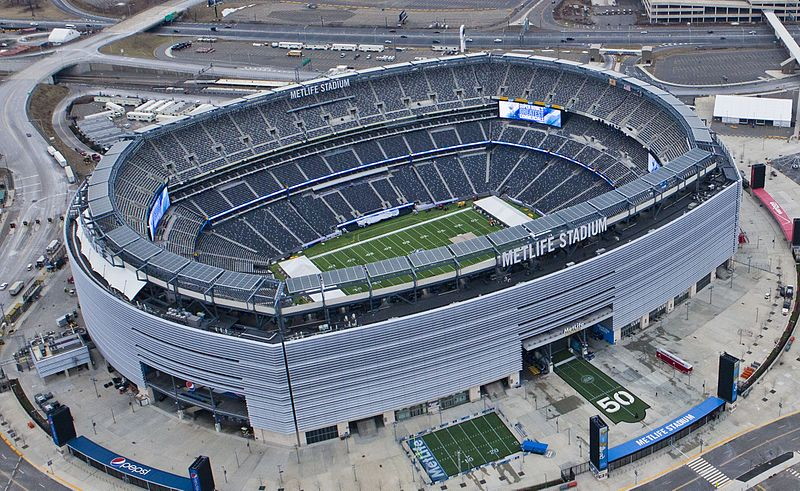
When Qatar was chosen to host the 2022 World Cup, there was a big issue in the sense that the country didn’t really host sporting events in the same way as previous hosts of major tournaments. That meant that a wealth of them had to be built from scratch, leading to now well documented problems with the deaths of migrant workers. The good news is that the same isn’t true of any of the United States of America, Mexico or Canada, which have been chosen to be the joint hosts for the 2026 World Cup, using mostly stadiums that are already standing.
Some of them are newer than others, though it is fair to say that there is an expectation that all of them will live up to the exacting standards that FIFA set when it comes to the venues that they will allow to host World Cup matches. Mostly, these standards are there in order to ensure that FIFA’s fat cats can enjoy some hospitality, but that also means that the facilities on offer tend to be of an impressive standard for other supporters that are heading there to enjoy some football. Here is a quick look at the stadiums that will be used in 2026:
MetLife Stadium (New Jersey / New York – United States of America)
Located about five miles from New York City, the MetLife Stadium is the home of both the New York Giants and the New York Jets, two National Football League teams. It cost in the region of $1.6 billion to build, making it one of the most expensive stadiums to build in the US by the time that it was completed. It is one of just two NFL stadiums that are shared by two teams, with the other one being SoFi Stadium in California.
Unlike most NFL venues, the MetLife Stadium doesn’t have a roof. What it does boast, though, is ten giant LED TVs at the entrances, showing the team that is in house. The seating bowl is designed in such a way so as to avoid the possibility of the upper seats limiting the view of the lower ones. There are actually four locker rooms in the stadium: one at either end for the two home teams and a visitor dressing room adjacent to them.
AT&T Stadium (Texas – United States of America)
The AT&T Stadium in Arlington, Texas is the home ground of the National Football League side the Dallas Cowboys. It is a multi purpose venue that can host anything from NFL matches to football games, via rodeos and professional wrestling events. It is often referred to as Jerry World, in honour of the owner of the Cowboys, Jerry Jones. At the time of writing, the fact that it can be expanded to up to around 100,000 seats means that it is the biggest stadium in NFL in terms of capacity.
By the time construction was completed, the cost of the venue had risen from the estimated $650 million to in the region of $1.15 billion. Interestingly, the locals in Arlington actually voted to increase their own taxes in order to ensure the stadium was completed. The venue boasts a retractable roof, meaning that the roof can either be open or closed depending what it is that is required at any given moment.
Arrowhead Stadium (Kansas City – United States of America)
Officially known as the GEHA Field at Arrowhead Stadium because of a sponsorship, the Arrowhead Stadium, as it is known to most, is the home of the Kansas Chiefs, who play their games in the National Football League. The ground is part of the wider Truman Sports Complex, which includes the home of the Major League Baseball side the Kansas Royals, Kauffman Stadium. It is the 27th biggest stadium in the United States of America by capacity.
Given the fact that it opened its doors for the first time in 1972, it is fair to say that Arrowhead Stadium is one of the oldest stadiums being used for the World Cup. That isn’t to say that it is falling apart however; major renovations were carried out between 2007 and 2010 at a cost of nearly $400 million. As part of the World Cup, hospitality sections will need to be improved at the stadium in order to fit in with FIFA’s expectations.
NRG Stadium (Houston – United States of America)
Formerly known as the Reliant Stadium and currently called NRG because of sponsorship, the NRG Stadium is part of the wider area known as NRG Park. That is a collection of venues that includes the famed Astrodome. When the venue was being built, a plan was in place for it to have the first retractable roof in the National Football League. As well as hosting the NFL matches of the Houston Texans, it is also where many ‘soccer’ matches of both the US men’s team and the Mexico team take place.
There is an open air feel to the venue thanks to the use of glass, whilst it also appears to glow at night. The interesting thing about the roof is that it is fabric in nature, with those responsible for operating it able to see live imagines of the roof’s journey. In 2013, a new video screen was installed at the stadium, which was one of the biggest in professional sports at the time.
Mercedes Benz Stadium (Atlanta, United States of America)
The Mercedes Benz Stadium opened in 2017 and was a replacement for the Georgia Dome. It is where the Atlanta Falcons play their home games in the National Football League, but is also a dual purpose venue as Atlanta United Football Club play their Major League Soccer games there. Known as the New Atlanta Stadium, it is sponsored by the car company Mercedes Benz, which is why it has its current moniker.
As with many other NFL stadiums, the most notable feature of the Mercedes Benz Stadium is its retractable roof, giving cover when the weather is not good. There are eight translucent panels that make up the roof, which are designed toggle the image of a bird extending its wings when the roof is open. There is a ring shaped video board known as the Halo, which sites just beneath the roof. The waterproof nature of many of the electrics within the venue mean that the roof can be open even under light rain.
SoFi Stadium (California, United States of America)
Alongside the MetLife Stadium, the SoFi Stadium is one of just two venues in the National Football League that are shared by two teams. In this case, those teams are the Los Angeles Rams and Los Angeles Chargers. In spite of its history as an NFL ground, it has hosted ‘soccer’ matches on a couple of occasions. The most obvious of these was in 2022 when it witnessed LA Galaxy take on Guadalajara and Club América play Los Angeles FC on the same day.
It is just as well that it is somewhere that can host football matches. As well as the 2026 World Cup, the venue also played host to the 2023 CONCACAF Gold Cup Final. It will also be where the 2028 Summer Olympics and Paralympics will be hosted, in addition to the 2031 and 2033 Rugby World Cups. At the time of writing, the biggest event it has hosted was Wrestlemania 39, which was in February 2020.
Lincoln Financial Field (Philadelphia, United States of America)
The home of the National Football League team the Philadelphia Eagles, Lincoln Financial Field bears its name because of a sponsorship deal with the Lincoln Financial Group. Both the city of Philadelphia and the wider state of Pennsylvania contributed to the cost of building the venue, with other money raised by selling Stadium Builder’s Licences to Eagles supporters with season tickets. It has hosted numerous concerts over the years from the likes of Bruce Springsteen and Taylor Swift.
There are canopies over the east and west stands that are designed to evoke the name of the team. It is a venue that has some experience of hosting football, with one of the very first events that took place at the stadium being a friendly match between Manchester United and FC Barcelona. It has even hosted some World Cup matches, which was in 2003 when the FIFA Women’s World Cup took place. On top of this, it hosted the two quarterfinals for the 2009 CONCACAF Gold Cup.
Lumen Field (Seattle, United States of America)
When the stadium was being built and then first opened it was known as the Seahawks Stadium. That is because it is the home of the Seattle Seahawks, the National Football League team. Nowadays, it is called Lumen Field because Qwest sponsored it before being being acquired by Lumen Technologies. It has a good view of Downtown Seattle, which is about a mile away from the stadium.
As far as football fans are concerned, there will be a sense that Lumen Field is one of the best stadiums for World Cup matches. That is because it is also the home of the Seattle Sounders, one of the teams that plays its games in the Major League Soccer division. Indeed, even viewers at home are likely to be pleased, on account of the fact that the sight lines for the cameras were chosen with ‘soccer’ matches in mind. It has hosted numerous football matches since opening, including several CONCACAF Gold Cup matches in 2016.
Levi’s Stadium (California, United States of America)
Designed by HNTB, Levi’s Stadium was created to be a multi purpose venue that put the experience of fans and its use of green technology at the top of its list of priorities. As you might have guessed, the stadium is sponsored by Levi Strauss & Co., which took on sponsorship duties in 2013. It is located about 40 miles to the south of San Francisco, but is the National Football League home venue of the San Francisco 49ers. In additional, it has hosted ice hockey games and Wrestlemania 31.
The stadium does have some experience of hosting football matches. In 2014, for example, the San Jose Earthquakes agreed to play in one match a year for five years at the venue. It has also hosted friendly matches, such as in 2016 when Liverpool defeated AC Milan 2-0 there. In 2017, the United States played Jamaica in the CONCACAF Gold Cup, defeating them 2-1 on their way to winning their sixth title.
Gillette Stadium (Massachusetts, United States of America)
Though the Gillette Stadium is best known as being the home of the National Football League side the New England Patriots, football fans will be more interested in the fact that it is where the Major League Soccer side the New England Revolution play their games. They did play at Foxboro Stadium until 2001, moving to the Gillette Stadium when it opened and playing their games at the venue ever since. In other words, it is entirely reasonable to surmise that the stadium is more than ready to host World Cup matches.
You can get to it via rail thanks to the Foxboro MBTA station, which is open when matches are played and is located on both the Providence / Stoughton and Franklin lines. Owned and operated by Kraft Sports Group, It has hosted many international football matches since it first opened. That is largely thanks to its use as one of the main venues for the 2003 CONCACAF Gold Cup and the Women’s World Cup that same year.
Hard Rock Stadium (Miami Gardens, United States of America)
At the time of writing, the Hard Rock Stadium has hosted six Super Bowls since it first opened in 1987, so it is fair to say that it is a venue that knows how to cope with major events. Prior to their move to LoanDepot Park in 2012, the stadium was the home of the Major League Baseball side the Florida Marlins. Nowadays it is predominantly where the National Football League side the Miami Dolphins play their games, but it is very much an all purpose location that was modernised thanks to renovations in 2015.
Friendly football matches have been held at the Hard Rock Stadium over the years, including a 2011 game between Barcelona and C.D. Guadalajara. The International Champions Cup, which is a friendly tournament often held in pre season, has taken place at the venue a number of times. As a result, teams such as Liverpool, Manchester United and Real Madrid have played here over the years.
BC Place (Vancouver, Canada)
A multi purpose venue that is owned and operated by the BC Pavilion Corporation, BC Place is the home of the Canadian Football League side the BC Lions. More importantly, as far as football fans are concerned at least, is the fact that it is where the Vancouver Whitecaps play their Major League Soccer matches. It was the main stadium for both the Winter Olympics and the Winter Paralympics in 2010, so it is a venue that has a good experience of hosting major tournaments that are watched by the entire sporting world.
The fact was confirmed in 2012 when it hosted the CONCACAF Women’s Olympic Qualifying Tournament, as well as three years later when the championship match in the 2015 FIFA Women’s World Cup took place here. It originally had an air supported dome roof, but that was replaced a retractable roof that is supported by cables. When it was completed, that was the largest such roof of its kind.
BMO Field (Toronto, Canada)
Both the Major League Soccer side Toronto Football Club and the Canadian Football League team the Toronto Argonauts play their matches at BMO Field. It opened its doors for the first time in 2007 and is built on the exact location of the Exhibition Stadium that came before it. It was built as a ‘soccer’ specific ground, so it is well placed to be able to handle the stresses and vigours of a World Cup. In fact, it has hosted matches during both the 2007 FIFA Under 20 World Cup and the 2014 FIFA Under 20 Women’s World Cup.
In terms of major tournaments, BMO Field was used as the home stadium for the Canadian national team during the 2015 Pan American Games, seeing rugby union teams from all around the world arrive to take part in rugby sevens matches here. It underwent some major renovations between 2014 and 2016, which not only added an upper tier to the east grandstand and a roof over the seating area, it also ensured that the stadium was modernised.
Estadio Azteca (Mexico City, Mexico)
A multi purpose stadium located in Mexico City, there is an argument that Estadio Azteca is the best placed venue to cope with the arrival of the World Cup to Mexico in 2026. That is because both Club América and Cruz Azul play their matches here, as does the Mexico national team. It can handle big events, as shown by the fact that the National Football League plays one game a season at the venue, which is part of the International Series that also sees NFL matches take place at the likes of Wembley Stadium and the Tottenham Hotspur Stadium.
It is one of the most iconic stadiums in world football, having hosted two World Cups prior to 2026. One of them involved Maradona scoring both the ‘Hand of God’ goal and also the ‘Goal of the Century’ against England in the 1986 quarter final. It was also the venue that oversaw the ‘Game of the Century’ in 1970, which was were Italy defeated West Germany 4 – 3 in extra time, with the match having ended without any goals after 90 minutes.
Estadio BBVA (Guadalupe, Mexico)
Known as ‘El Gigante de Acero’, which translates to ‘The Steel Giant’, Estadio BBVA is the stadium at which C.F. Monterrey play their home matches. It opened in 2015, making it one of the youngest venues to host World Cup matches in 2026 and has already hosted a major tournament in the form of the 2022 CONCACAF W Championship. One of those matches was the final, when the United States defeated Canada by a single goal to claim the title for the ninth time in the history of the USWNT.
When the venue opened, it was the fourth largest in Mexico. The fact that it had cost in the region of $200 to build meant that it was also one of the most expensive. Not long after it opened, the owners added more seats in order to increase the capacity. The grandstand is inclined at an angle of 34 degrees, whilst the stands are the minimum distance allowed by FIFA in order to ensure a close feel to the atmosphere.
Estadio Akron (Zapopan, Mexico)
The third Mexican stadium being used to host World Cup matches in 2026 is the Estadio Akron. It is known as that for sponsorship reasons, having already been named the Estadio Omnilife and the Estadio Chivas since opening in 2010. As far as football fans are concerned, the good news is that it knows what to expect from ‘soccer’ matches. Liga MX side C.D. Guadalajara call it their home, whilst in 2010 it hosted the first leg of the Copa Libertadores final. A year later, the opening and closing ceremonies of the American Games were held here.
One of the most interesting things about the stadium is the fact that it hosted a match between Guadalajara and Manchester United in 2010 as part of the deal that saw Javier “Chicarito” Hernandez to Old Trafford. The player himself played one half for each club, signifying his move, scoring the opening goal in a game that Guadalajara won 3-2.
Biggest & Most Successful World Cup Teams

Brazil
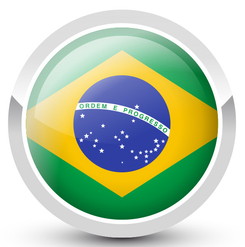 Brief History: Brazil’s first football match is believed to have taken place in 1914 and was, randomly, against the English team Exeter City. They joined FIFA in 1923 and are the World Cup’s most successful ever nation. Wins in 1958, 1962, 1970, 1994 and 2002 make them the envy of the rest of the footballing world. Interestingly, four of the five World Cup wins achieved by Brazil happened on different continents, winning in Sweden in 1958, Chile in 1962, North America (Chile and the US) in 1970 and 1994 and Korea/Japan in 2002.
Brief History: Brazil’s first football match is believed to have taken place in 1914 and was, randomly, against the English team Exeter City. They joined FIFA in 1923 and are the World Cup’s most successful ever nation. Wins in 1958, 1962, 1970, 1994 and 2002 make them the envy of the rest of the footballing world. Interestingly, four of the five World Cup wins achieved by Brazil happened on different continents, winning in Sweden in 1958, Chile in 1962, North America (Chile and the US) in 1970 and 1994 and Korea/Japan in 2002.
Brazil hold the joint-record with Spain for most connective games without defeat thanks to the thirty-five matches that they went unbeaten in. They have also won the World Cup, the Confederations Cup and the Olympic Football Tournament – wildly considered to be the three most important events in the men’s game.
Previous wins: 5
Chances for 2022: You can never rule Brazil out, given that they’re the tournament’s most successful side of all time. Yet you can’t help feeling that the current iteration of the side lacks the ruthlessness of previous generations. A decent amount of names in the squad that will travel to Russia will be recognisable to Premier League fans, such as Manchester City’s Ederson who is the reserve goalkeeper and Chelsea’s Willian. The side also boasts two of the world’s most expensive players in Barcelona’s Philippe Coutinho and Paris Saint-Germain’s Neymar. Even so, there’s a lack of balance in the team that makes them one of the sides that might struggle to make it past the semi-finals.
Uruguay
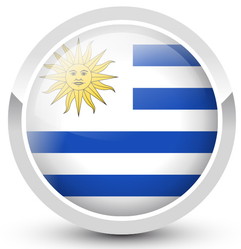 Brief History: Uruguay’s first-ever match took place in 1901 when they lost 3-2 to Argentina. Over the next fifteen years they played more than thirty games, all except for one of which were against Argentina. It wasn’t until the first Copa America that they started to play other South American teams. During international football’s more formative years, Uruguay were the most successful team in the world. They won back-to-back Summer Olympic football tournaments in 1924 and 1928 before winning the first-ever World Cup in 1930. They won it again in 1950 when they beat host nation Brazil at the Maracanã Stadium.
Brief History: Uruguay’s first-ever match took place in 1901 when they lost 3-2 to Argentina. Over the next fifteen years they played more than thirty games, all except for one of which were against Argentina. It wasn’t until the first Copa America that they started to play other South American teams. During international football’s more formative years, Uruguay were the most successful team in the world. They won back-to-back Summer Olympic football tournaments in 1924 and 1928 before winning the first-ever World Cup in 1930. They won it again in 1950 when they beat host nation Brazil at the Maracanã Stadium.
The Uruguayan side has not been without controversy over the years. In the 2010 World Cup, held in South Africa, Luis Suarez committed a deliberate handball in the Quarter-Final match against Ghana, with Asamoah Gyan missing the penalty that was awarded as a result. Uruguay went on to win the penalty shoot-out, knocking the African team out of the tournament. Suarez would again be at the centre of controversy four years later, being caught on camera biting the Italian defender Giorgio Chiellini. The Uruguayan was banned for nine games as a result, missing out on Uruguay’s Copa América matches in 2015 and 2016, meaning that they failed to defend their 2014 win in the competition.
Previous wins: 2
Chances for 2022: When the Groups were drawn the bookies had Uruguay as 25/1 outsiders, the same odds given to Colombia. Luis Suarez is still tearing it up for Barcelona, but he’s thirty-one now and there isn’t enough quality in the rest of the squad to see them cause the big teams any major issues. Edison Cavani will cause problems for defences, especially with Suarez buzzing around behind and alongside him, but two players aren’t enough to win the World Cup.
Argentina
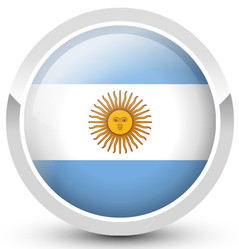 Brief History: La Selección have picked up three World Cup trophies over the years, starting with one in 1978 when they beat the Netherlands after extra-time. Their (joint?) most famous victory was led by Diego Maradona in 1986 when they faced England in the Quarter-Finals and won thanks to the player’s ‘Hand of God’ goal. They went on to beat West Germany in the Final, picking up the trophy for the second time. A far cry from the 4-2 loss to Uruguay that they endured in their first ever World Cup Final appearance in 1930. That might well have been seen as revenge for the Uruguayans, having lost when Argentina played them in their first ever international match in 1901.
Brief History: La Selección have picked up three World Cup trophies over the years, starting with one in 1978 when they beat the Netherlands after extra-time. Their (joint?) most famous victory was led by Diego Maradona in 1986 when they faced England in the Quarter-Finals and won thanks to the player’s ‘Hand of God’ goal. They went on to beat West Germany in the Final, picking up the trophy for the second time. A far cry from the 4-2 loss to Uruguay that they endured in their first ever World Cup Final appearance in 1930. That might well have been seen as revenge for the Uruguayans, having lost when Argentina played them in their first ever international match in 1901.
Their third World Cup win is at least on a par with the 1986 title thanks to the fact Argentina were led by another all time great in Lionel Messi. The champion of the world title had been the only thing in football that had eluded Messi up to the age of 35 but he finally got his most prized possession thanks to 2 goals in the final against France and a successful conversion in the shootout that they won 4-2 after drawing 2-2 in full time and 3-3 after extra-time.
Three World Cup wins is better than the vast majority of nations that take part in the tournament every four years, but it’s as nothing when compared to their Copa América success – at the time of writing Argentina have picked up fifteen tournament wins in that competition. Add to that the FIFA Confederations Cup and the Kirin Cup and you can start to build a picture of Argentina as one of the more successful South American sides out there. Despite past successes, the national side only reached the top of the FIFA World Rankings in 2007, having never quite got there before. That said, the rankings system was only introduced in 1992 and were revamped the year before Argentina hit the top spot.
Previous wins: 3
Chances for 2022: Lionel Messi is unquestionably the best player in the world and has dominated that title alongside Cristiano Ronaldo for some time. Even so, some people believe that he is not the best player of all time because he’s never done it on the big stage. Given he’s now thirty, this may well be his last chance to prove he’s got what it takes to influence the biggest international tournament in the world. He’s peerless for Barcelona, but when he’s not surrounded by the likes of Luis Suarez and Philippe Coutinho will he be able to report his form? Certainly the likes of Sergio Agüero and Nicolás Otamendi aren’t poor teammates to try it with.
Germany
 Brief History: Alongside Italy, Germany are the joint-second most successful nation in World Cup history. Only Brazil can outstrip their four tournament wins, with no side in world football able to match their eight World Cup Final appearances. That’s fairly remarkable when you consider that the country was effectively split in half between 1952 and 1990. East Germany, the side that represented the German Democratic Republic, never quite enjoyed the same degree of success as West Germany. Along with Brazil, Argentina and France, Germany have won all of the FIFA World Cup, the FIFA Confederations Cup and the Olympic Football. They’re also the only nation to have won the World Cup in both the men’s and women’s game.
Brief History: Alongside Italy, Germany are the joint-second most successful nation in World Cup history. Only Brazil can outstrip their four tournament wins, with no side in world football able to match their eight World Cup Final appearances. That’s fairly remarkable when you consider that the country was effectively split in half between 1952 and 1990. East Germany, the side that represented the German Democratic Republic, never quite enjoyed the same degree of success as West Germany. Along with Brazil, Argentina and France, Germany have won all of the FIFA World Cup, the FIFA Confederations Cup and the Olympic Football. They’re also the only nation to have won the World Cup in both the men’s and women’s game.
The first game of the official German national side occurred on the 5th of April in 1908 when they lost 5-3 to Switzerland. Interestingly, Germany’s first games after the First World War, the Second World War and the reunification of the country in 1990 were all against the Swiss. Prior to that official game in 1908, German sides played a number of matches against English selections, with the England side winning all of them comfortably. Perhaps that why the Germans have seemed to enjoy knocking England out of the World Cup so often. One of the country’s more controversial appearances in the World Cup tournament came in 1938 when Austria was made a part of the German nation. As a result their side was disbanded and Austrian players were forced to join the German side for that year’s World Cup competition as a sign of ‘unity’.
Previous wins: 4
Chances for 2022: According the the bookmakers, the Germans are the odds-on favourites for this year’s World Cup. The interesting thing about that is that they don’t have any stand-out phenomenal players like Lionel Messi, but they do have a unity that has come from years of playing together for a talented manager in Joachim Löw. That’s not to say that it’s a poor team, of course. Manuel Neuer is arguably the best goalkeeper in the world, with Mats Hummels and Jerome Boateng making a formidable centre-back partnership in front of him. With the likes of Thomas Müller and Mesut Özil pulling the strings further forward, Germany will be one of the most balanced sides in the competition. Very much the team to beat.
Italy
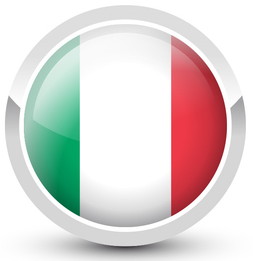 Brief History: Up there with Germany with those four wins is Italy. Unlike the Germans, though, the majority of Italy’s success is well behind them now. Winning the first two World Cups that were hosted in Europe, back when South American teams other than Brazil boycotted it because of the travel, perhaps flatters the Italians a touch. Wins in 1982 and 2006 were much more about how good the team was rather than the weakness of the sides taking part in the competition as the first two tournament wins were. The Azzurri have always been known as a defensively well-organised side, which no doubt helped them to go fifty games unbeaten in European Championship qualifiers during the 2010s.
Brief History: Up there with Germany with those four wins is Italy. Unlike the Germans, though, the majority of Italy’s success is well behind them now. Winning the first two World Cups that were hosted in Europe, back when South American teams other than Brazil boycotted it because of the travel, perhaps flatters the Italians a touch. Wins in 1982 and 2006 were much more about how good the team was rather than the weakness of the sides taking part in the competition as the first two tournament wins were. The Azzurri have always been known as a defensively well-organised side, which no doubt helped them to go fifty games unbeaten in European Championship qualifiers during the 2010s.
Italy played their first ever game in 1910 when they beat France 6-2. They were rewarded by the crowd throwing cigarette packets onto the pitch as a thank you. How times have changed! They played in the football tournament of the Summer Olympics in 1928, picking up a Bronze medal after losing to Uruguay in the Semi-Final. They responded by beating Egypt 11-3 in the Third Place match. It wasn’t the only thrilling match that the Italians have been involved in over the years. In the 1982 World Cup Finals they played Brazil in a Group Stage game that is widely considered to be one of the best ever World Cup matches. Italy needed to win to get to the Semi-Finals of the tournament, twice going in front only to be pegged back by the Brazilians. They won it in the 74th minute, going on to best West Germany in the final for their third World Cup trophy.
Previous wins: 4
Chances for 2022: In one of the biggest shocks of the tournament, Italy failed to qualify for the 2018 World Cup. Gian Piero Ventura took over from Antonio Conte as manager in July of 2016, losing his first game to France by three goals to one. That was a sign of things to come, with the Italians losing 1-0 to Sweden in a play-off match, meaning that they would miss out on the World Cup tournament for the first time since 1958. They will be hoping to qualify for 2022.
England
 Brief History: The phrase ‘brief history’ is applicable to England Perhaps more than any other side. For a nation that seems so determined to live in the past, you’d think that they would have more to fall back on than a solitary World Cup. This is, after all, the country that quite literally invented the sport. The problem that the English tend to have is that they still seem to think that blood and guts football is as useful now as it was during the sport’s more formative years, when the reality is that more successful nations have moved on. That is perhaps summed up by the Brazilian phrase ‘Os ingleses o inventaram, os brasileiros o aperfeiçoaram’, which translates to ‘The English invented it, the Brazilians perfected it’.
Brief History: The phrase ‘brief history’ is applicable to England Perhaps more than any other side. For a nation that seems so determined to live in the past, you’d think that they would have more to fall back on than a solitary World Cup. This is, after all, the country that quite literally invented the sport. The problem that the English tend to have is that they still seem to think that blood and guts football is as useful now as it was during the sport’s more formative years, when the reality is that more successful nations have moved on. That is perhaps summed up by the Brazilian phrase ‘Os ingleses o inventaram, os brasileiros o aperfeiçoaram’, which translates to ‘The English invented it, the Brazilians perfected it’.
Nevertheless, one World Cup is more than most other nations have managed. You’d be forgiven for expecting more from the joint-oldest national team in the world. Scotland and England went head-to-head for the first time in 1870, soon involving the other Home Nation sides of Ireland (later Northern Ireland) and Wales in the Home Championship. Perhaps a sign of how insular the English footballing mentality has always been comes in the fact that they only played those Home Nation sides for the following forty years. Make no mistake, though, that World Cup win in 1966 is rightly seen as one of the country’s proudest moments. It wasn’t just that they won the tournament but the fact that they did so when hosting the competition. Since then it’s been more of a matter of glorious failures, unfortunately, including in 1990 when knocked out by, you guessed it, Germany after a penalty shoot-out.
Previous wins: 1
Chances for 2022: There have been much better teams than the one that Gareth Southgate will be in charge of in Qatar. This ‘Golden Generation’ featuring the likes of Steven Gerrard, David Beckham and Michael Owen should’ve done much better than they did. Yet this isn’t a squad without talent. Harry Kane is one of the most natural finishers since Alan Shearer, with Jamie Vardy also challenging him for the striker’s berth. The problems are undoubtedly elsewhere in the team, with a mediocre set of goalkeepers and a midfield that is young rather than talented. Reaching the Semi-Finals again would be a decent enough achievement for a mediocre team.
France
 Brief History: France’s history is closely but coincidentally linked to FIFA’s, with both the national team and the international organisation being formed in 1904. The first game that they played was a 3-3 draw with Belgium, played out in Brussels. In 1905 France played their first home match, which was a 1-0 win over Switzerland at the Parc des Princes. Only five-hundred people turned up to watch the match, with the French struggling to earn themselves an identity on the international stage. That might have something to do with the French sport federation of the time, the Union des Sociétés Françaises de Sports Athlétiques, having a disagreement with FIFA. It led to the formation of the French Interfederal Committee, which later became the French Football Federation. The USFA merged with the FFF in 1921, resulting in a more unified approach to France’s football.
Brief History: France’s history is closely but coincidentally linked to FIFA’s, with both the national team and the international organisation being formed in 1904. The first game that they played was a 3-3 draw with Belgium, played out in Brussels. In 1905 France played their first home match, which was a 1-0 win over Switzerland at the Parc des Princes. Only five-hundred people turned up to watch the match, with the French struggling to earn themselves an identity on the international stage. That might have something to do with the French sport federation of the time, the Union des Sociétés Françaises de Sports Athlétiques, having a disagreement with FIFA. It led to the formation of the French Interfederal Committee, which later became the French Football Federation. The USFA merged with the FFF in 1921, resulting in a more unified approach to France’s football.
When it comes to the World Cup, France haven’t enjoyed as much success as they perhaps should have over the years. Their first ever game in the competition was a 4-1 win over Mexico in 1930, but in 1934 they were knocked out in the first round courtesy of a 3-2 loss to Austria. As a footballing nation, France have enjoyed numerous ‘Golden Generations’. The first came in the 1950s, with a side that reached the Semi-Finals of the World Cup in 1958. They had another one in the 1980s, with a side that went out in the same phase of the tournament in 1982 before winning the European Championship in 1984. They went on to win the Gold medal at that summer’s Olympic Games and were favourites to win the 1986 World Cup. Once again, however, they went out in the Semi-Final stage. They finally won the competition in 1998, having lost in the final of the 1996 European Championships. They beat Brazil 3-0 in the Final, which was played at the Stade de France because France was the host nation.
Previous wins: 2
Chances for 2022: Are France going through another Golden Generation at present? Certainly their performance in the 2018 World Cup suggested as much, given that they won it. They also got to the final of the Euros in 2016, they were very much the favourites, owing to the fact that they were hosting the competition and their opposition side, Portugal, seemed to bumble their way there rather than storm to the last match. Portugal upset the apple cart with a 1-0 win, however, meaning that yet another chance to be successful had eluded the French. They only lost one match in the qualifying phase for the 2018 tournament, though, leading to the bookmakers making them third-favourites. Their team is a mixture of old-hands and talented youngsters, with great things expected of the likes of Paul Pogba, Antoine Griezmann, Anthony Martial and Kylian Mbappé. Any potential success will likely depend on squad harmony.
Spain
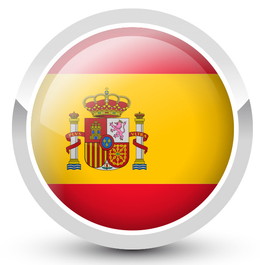 Brief History: Last but not least, a look at the Spanish side that was recently considered to be the one of the best national sides of all time. That was largely due to the fact that they sandwiched their first-ever World Cup win in between two European Championships, meaning that they didn’t lose a competition match for over eight years. Their World Cup win came in 2010 when the defeated the Netherlands in South Africa. The Final of that tournament was a decidedly moody affair, with the Dutch forgoing the opportunity to play football in favour of playing a rather more physical game. La Roja justifiably prevailed, though, with the European Championship wins that came either side leading them to become the first ever side to win three successive continental championships and World Cups.
Brief History: Last but not least, a look at the Spanish side that was recently considered to be the one of the best national sides of all time. That was largely due to the fact that they sandwiched their first-ever World Cup win in between two European Championships, meaning that they didn’t lose a competition match for over eight years. Their World Cup win came in 2010 when the defeated the Netherlands in South Africa. The Final of that tournament was a decidedly moody affair, with the Dutch forgoing the opportunity to play football in favour of playing a rather more physical game. La Roja justifiably prevailed, though, with the European Championship wins that came either side leading them to become the first ever side to win three successive continental championships and World Cups.
Spain’s national side is relatively young in terms of international sides, having been formed in 1920. The side was essentially put together in order to compete in the Summer Olympics that year, beating Denmark in their opening game. The tournament turned out to be a fascinating one, with Czechoslovakia disqualified for leaving the pitch midway through the Final. Spain and three other national sides then ended up playing in a miniature tournament of their own to see who would be awarded the Bronze and Silver medals, with Belgium earning the Gold. In the end, France didn’t turn up, meaning that Spain played the Netherlands in the ‘final’ game, winning 3-1 and picking up a medal at their first ever competitive tournament. They might have been more successful over the years if not for the Spanish Civil War and other international incidents.
Previous wins: 1
Chances for 2022: The bookmakers believe that Spain are more likely to make an impression at the 2018 World Cup than the likes of Argentina, England and a much-fancied Belgium side. It will require a much better performance than they managed when defending their title in 2014, failing to make it out of their group with just one win from three. They didn’t fair much in the European Championships of 2016, losing 2-0 to Italy in the Last Sixteen match-up. That is, in part, because the better players in the Spanish squad are all much older now, with the younger players coming up behind them lacking the same killer instinct. That said, they have one of the bet goalkeepers in the world in David de Gea, as well as some decent young talent such as Marco Asensio, Suso and Álvaro Morata. Will they be able to rediscover their winning touch? It seems unlikely.
History of The World Cup
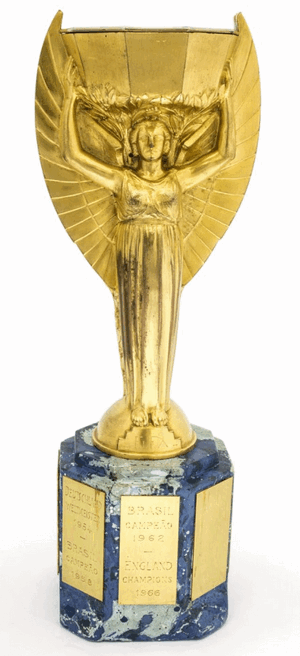 Knowing why people bet an event like the World Cup is helpful if you’re trying to figure out why you should have a flutter yourself, but knowing about the history of the tournament might well give you pointers on where things are going to go next. As with the very origins of football itself, the World Cup owes a lot to British football.
Knowing why people bet an event like the World Cup is helpful if you’re trying to figure out why you should have a flutter yourself, but knowing about the history of the tournament might well give you pointers on where things are going to go next. As with the very origins of football itself, the World Cup owes a lot to British football.
The first international match of any sort was played between Scotland and England in Glasgow back in 1872. It ended in a 0-0 draw, but was the inspiration behind the formation of the British Home Championship, which was inaugurated twelve years later.
As the name suggests, that saw England, Scotland, Wales and Ireland (later Northern Ireland) take each other on in round-robin matches to see who would be crowned the number one British team.
By that point, of course, football was spreading like wild-fire around the rest of the European continent, if not the world. As it grew in popularity, so too did the clamour for different nations to play against each other in some sort of competitive format.
In both 1900 and 1904 a miniature football tournament was played as part of the Summer Olympics, though back then it was only classed as a ‘demonstration sport’ and no medals were awarded to the winners or second and third placed teams.
The real turning point for the sport began to take placed after the formation of the Fédération Internationale de Football Association, or FIFA as it’s better known.
The new organisation made attempts to arrange a football tournament between different countries in 1906, with the idea being that it would be outside of the Olympic framework. It failed.
The ‘First World Cup’
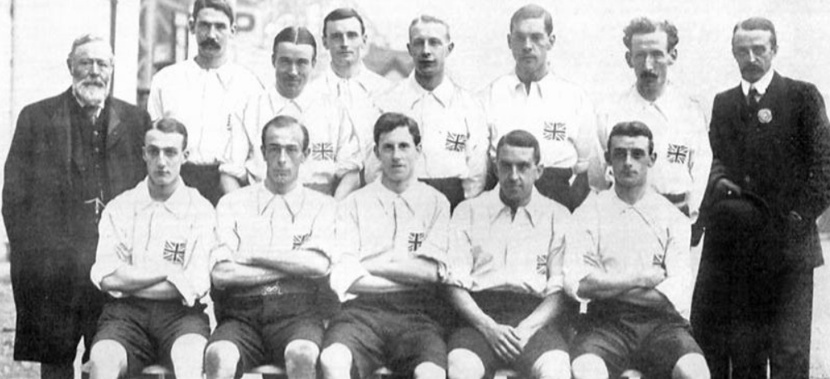
The Summer Olympics of 1908 featured football as a medal-winning sport for the first time. Because the Games were held in London that year, The Football Association organised the competition and it was for amateur players only. Great Britain won the Gold medal, as they would do in Stockholm four years later, but the entire enterprise was seen by most to be more of a show than a genuine competition.
The fact that it was only for amateur players certainly meant that most football lovers didn’t take it that seriously, leading to Sir Thomas Johnstone Lipton, the man behind the Lipton Teas brand, organising his own tournament in 1909, hosted in the city of Turin. The Sir Thomas Lipton Trophy invited clubs from various nations to compete on behalf of their home country. It saw representatives from Switzerland, Germany and Italy attend, but the FA banned English sides from playing in it.
The decision from the Football Association not to send a representative team might seem odd nowadays, but in order to understand how the World Cup developed you have to realised that football was really in its formative stages back then. The various organisations were fighting against each other for recognition, with English sides having only just united behind the London FA rather remaining split between London and the likes of the Sheffield association. That’s why it was such a big moment when FIFA official recognised the football tournament that took place during the Olympic Games as a ‘world football championship for amateurs’. They also agreed to take on the responsibility of managing the event, paving the way for the first intercontinental competition in the sport of football.
It took place during the 1920 Summer Olympics, being contested by thirteen teams from Europe and a team representing Egypt, which is what made it an intercontinental affair. Belgium won it, becoming the first country to win a competition that was both recognised by FIFA and involved teams not just from Europe.
FIFA turned professional in 1924 and the next two Summer Olympic football tournaments were consequently the first to be considered as Open World Championships, with both the 1924 competition and the 1928 one begin won by Uruguay. By this stage the popularity of the international tournament was clear for all to see. President Jules Rimet began to push for FIFA to host its own tournament that would be separate and distinct from the one that it organised during the Olympics, believing that it would now be more successful than it had been back in 1906. The decision to do so was made official during the FIFA Congress held in Amsterdam in 1928.
The Actual First World Cup
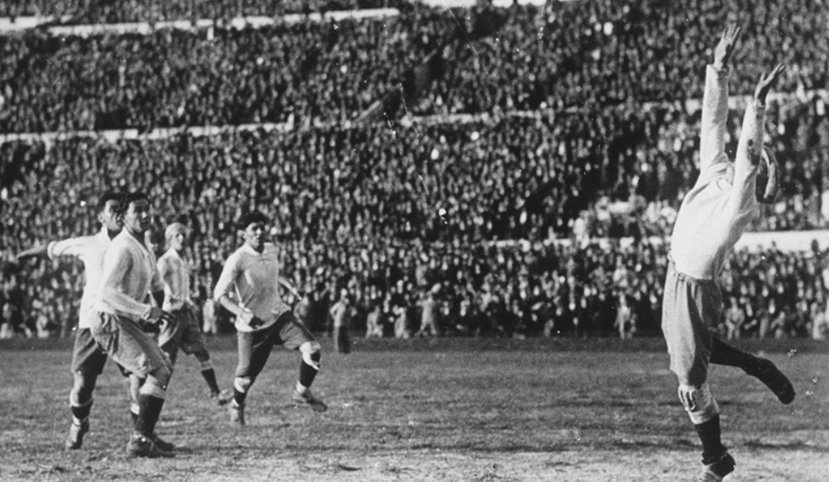
The Sir Thomas Lipton Trophy has always been known as the ‘first World Cup’, but that’s obviously just a tongue-in-cheek moniker given to it to represent the fact that it was the first tournament to host teams of professionals from around the world.
The first actual World Cup took place in 1930, with Uruguay chosen as the host nation. That was in part because they had won back-to-back football tournaments in the Summer Olympics and partly because the country was celebrating the centenary of the Treaty of Montevideo, which saw both Brazil and Argentina recognise the country’s independence. The choice of Uruguay might have made sense for sentimental reasons, but it wasn’t such a good option in practical terms. It involved a trip that was both long and cost a lot of money for European sides, resulting in many refusing to commit to attending after their national football associations were sent an invitation to do so.
Rimet, concerned that there might be a repeat of the failure of the 1906 attempted tournament, personally endeavoured to persuade some of Europes best sides to attend. Yugoslavia, Belgium, Romania and France eventually confirmed that they would do so, resulting in thirteen different nations being represented in the competition when it got underway. They were made up two North American sides, four European countries and seven South American teams.
The first ever official World Cup matches took place on the 13th of July 1930, when France played Mexico at the same time as the USA went up against Belgium. Lucien Laurent scored the tournament’s first ever goal, with the home nation of Uruguay winning the inaugural World Cup final when they beat fellow South Americans Argentina by four goals to two in front of a crowd of 93,000 people.
Problems For The New World Cup
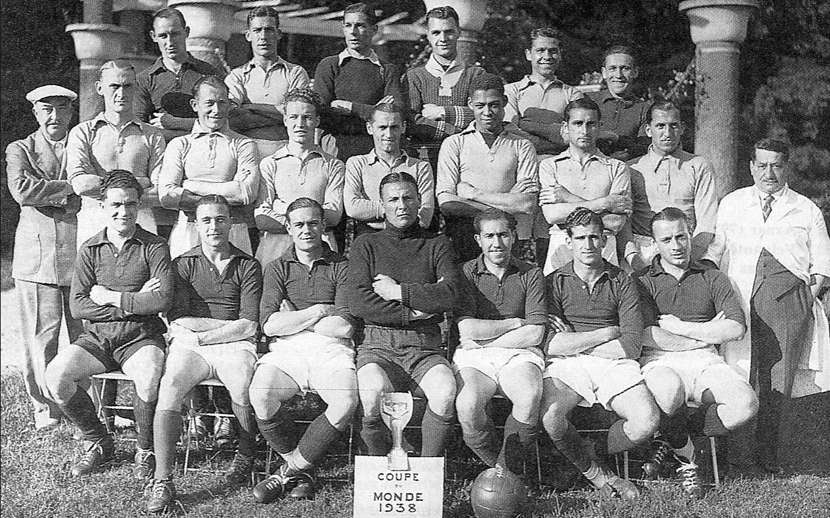
The first issue that cropped up for FIFA came in the form of a disagreement between them and the International Olympic Committee over the status amateur footballers, resulting in the sport being dropped from the Summer Olympics in 1932. It did return in 1936, but by that point the World Cup was well-established and considered to be the sport’s foremost competition. Disagreements with the IOC weren’t the only problem that FIFA had to deal with, however. Even when the organisation was able to persuade national associations to send teams to play in the burgeoning tournament, travel was still a major issue. When it was confirmed that the 1934 World Cup would be held in Italy, for example, the majority of South American teams refused to attend. When France was chosen as the host nation for the 1938 tournament, all except for Cuba and Brazil boycotted it.
The outbreak of the Second World War caused further problems. Germany was hoping to host a World Cup in 1942, with Brazil applying for the 1946 tournament. Unfortunately both had to be abandoned because of World War II and the aftermath of it, with many countries struggling to recover enough to even think about sending men to play football. Brazil did win the rights to host the next World Cup that was to take place, though, welcoming countries from around the globe for the 1950 tournament. That year is also notable for being the first time that British nations took part in a World Cup, having withdrawn from FIFA in 1920 because of an unwillingness to play sport against countries they had been at War with prior to that. There was also a refusal to accept the influence of foreign countries on a sport that the British felt that they had invented.
British sides returned to the FIFA family after being invited to do so in 1946, thereby being eligible to send a team to play in the 1950 competition. It wasn’t just British sides that were welcomed back to the fold for the Brazil tournament. Uruguay were one of the South American teams that had refused to travel to Europe for either the 1934 or 1938 World Cups, but they were happy enough to play in Brazil and returned to the competition as champions, despite the fact that Italy had won both the previous two. They consolidated their position as the best team in the world, however, by winning the decisive match of the final group stage of the 1950 World Cup, beating the host nation Brazil 2-1.
Expansion Of The Tournament
 From the moment that the World Cup was played in 1934, it featured sixteen teams competing against each other for the title of World Champions. The exceptions to this were the thirteen teams that played in the inaugural version of it in 1930, as well as the 1938 tournament that featured fifteen sides because Germany absorbed Austria after the qualifying matches had already taken place.
From the moment that the World Cup was played in 1934, it featured sixteen teams competing against each other for the title of World Champions. The exceptions to this were the thirteen teams that played in the inaugural version of it in 1930, as well as the 1938 tournament that featured fifteen sides because Germany absorbed Austria after the qualifying matches had already taken place.
The 1950 tournament only featured thirteen sides, owing to the fact that India, Scotland and Turkey withdrew at the last moment. The competition was also dominated by the European and South American sides, with those from the likes of North America, Africa, Oceania and Asia struggling to get a foothold in the tournaments. In fact, the only teams to even make it out of the first round that weren’t from Europe or South America were the US in 1930, Cuba in 1938, North Korea in 1966 and Mexico in 1970.
That is almost certainly what led to the expansion of the tournament in 1982, with twenty-four teams being invited to take part for the first time. The idea was to allow more of the African, Asian and North American nations to take part in, with the addition of these new nations considered to be a success. It was seen as such a success, in fact, that thirty-two teams have been taking part in the World Cup finals since 1998.
Though it was a success insomuch as the new nations added to the entertainment factor, the actual competition itself has remained under the control of European and South American sides throughout its existence. Mexico and Cameroon reached the Quarter-Finals in 1986 and 1990 respectively, whilst the USA and Senegal both made the same stage in 2002. South Korea have enjoyed the most success of any non-European or South American nation, finishing fourth when the competition was held jointly by them and Japan in 2002.
How Teams Qualify For The FIFA World Cup

As early as 1934 it was realised that the field for the World Cup would need to be thinned out if it wasn’t going to be too bloated as a tournament.
That was when qualifying tournaments were introduced for the first time and they’ve been used ever since. They way that they work can seem quite convoluted, but the reality is that it’s actually quite simple. FIFA is split into six different continental zones, with each of these overseen by their own respective confederations.
These are as follows:
- Africa – The Confederation of African Football (CAF): 9 or 10 spots
- Asia – The Asian Football Confederation (AFC): 8 or 9 spots
- North and Central America and the Caribbean – The Confederation of North, Central American and Caribbean Association Football (CONCACAF): 6, 7 or 8 spots
- South America – The South American Football Confederation (CONMEBOL): 6 or 7 spots
- Oceania – The Oceania Football Confederation (OFC): 1 or 2 spots
- Europe – The Union of European Football Associations (UEFA): 16 spots
Well before the qualifying phase for each World Cup gets underway, FIFA will decide how many places in the tournament will be awarded to each of the above continental zones. This is typically decided according to the strength of the teams within each confederation. After all, there’s no point in offering Oceania twenty places and Europe four, given the level of football played in each of those areas.
How each confederation then organises its qualification phase is up to them, with some starting the process up to three years before the World Cup is due to begin. The only thing that has remained constant since 1938 is the fact that the host nation(s) is granted a place in the World Cup finals without needing to go through the qualification phase. Until 2002 the defending champions were also given a berth, but this was stopped ahead of the 2006 tournament.
One team from each confederation, excluding UEFA, also enters into an inter-confederation play-off for the remaining two spots – this is why the exact number that qualify from each confederation except UEFA is variable. Six teams in total play in a four match tournament, the host confederation gets two spots in this play-off instead of one like the others. The only confederation where the number of qualifying nations is set in stone is UEFA with 16.
World Cup Finals Format
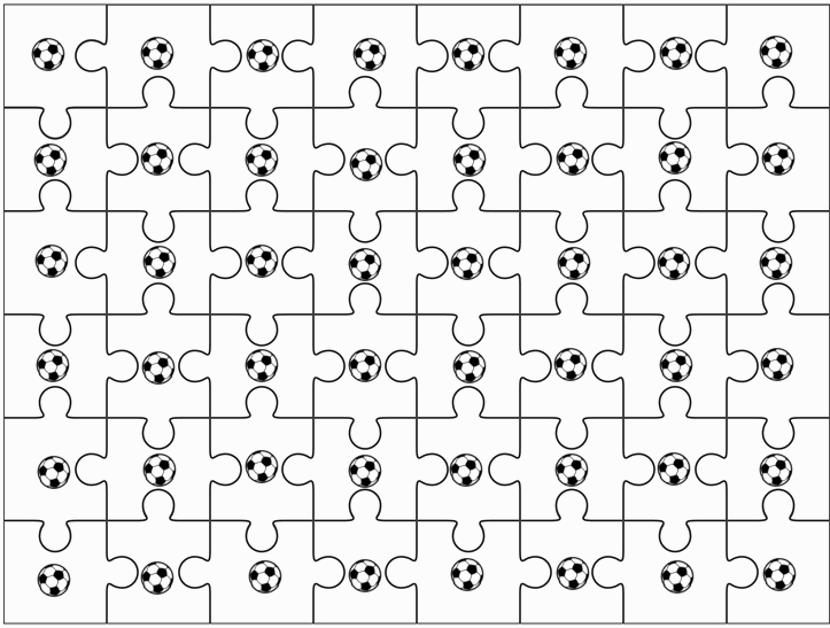
When looking at the World Cup Finals themselves, it’s important to remember that the previous system of thirty-two teams competing for the ultimate prize in international football is now over. From 2026 onwards, forty-eight teams will compete in the World Cup Finals.
There are two phases involved with the tournament the Group Stage and the Knockout Rounds. For the Group Stage, teams are split into twelve groups containing four teams each. The three hosts are joined by nine other teams as seeded nations, selected according to their FIFA World Ranking as well as performances in recent World Cup tournaments. They are each put into a different group, with the remaining teams placed into ‘pots’ according to their geographical location. The teams are then drawn randomly into one of the twelve groups, with each group containing no more than two European sides and no more than one team from any other of the confederations.
The groups then play out a ‘round-robin’ style tournament, with each team playing three matches, six matches total per group. The top two sides in each of the groups makes it through to the Knockout Rounds, with positions decided according to how many points each side has won during the Group Stage. They are joined by the eight best performing third placed teams.
Three points are awarded for a win, one for a draw and none for a defeat. Within any one group there are hundreds of possible outcome combinations available, with a lot of those resulting in a tie between the second, third and fourth placed teams. If that were to happen then the team that would progress to the Knockout Rounds will be determined by one of the following:
- Biggest Goal Difference
- Largest Number of Goals Scored
- Most Points in Head-to-Head Matches
- Biggest Goal Difference in Head-to-Head Matches
- Most Goals Scored in Head-to-Head Matches
The above criteria will be looked at in descending order. If none of them can be used to separate teams from each other than lots will be drawn to determine which side ends up progressing to the next phase of the competition. That is a single-elimination tournament, with sides playing against each other in one-off matches that must be decided when they are played. That means that if the scores are level after ninety minutes then an additional thirty minute of extra-time will be played. If extra-time still can’t decide a winner then the game will go to a penalty shootout.
The first Knockout Round of 32, which was added for 2026, sees the winners and four best runners up of each group go up against the team eight other runners-up and eight third placed teams from one of the other groups. Next comes the Last 16 and then the Quarter-Finals, with sides facing each other according to a pre-determined route to the Final. Winners of the Quarter-Finals play each other in the Semi-Finals, with the victors in those going head-to-head in the competition’s Final. There is also a third-place match, which takes place before the Final and features and the two losing teams from the Semi-Finals.
Expansion To 48 Teams
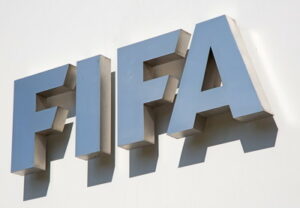 There has been discussion of the tournament expanding to including forty-eight teams since as early as 2013. Back then the issue was raised by Sepp Blatter, the then-President of FIFA. He wrote in an October edition of FIFA Weekly, ‘From a purely sporting perspective, I would like to see globalisation finally taken seriously, and the African and Asian national associations accorded the status they deserve at the FIFA World Cup’. Michel Platini, the President of UEFA who many suspected would challenge Blatter for the FIFA Presidency at the next election, responded by saying that he favoured a move to include forty teams rather than forty-eight.
There has been discussion of the tournament expanding to including forty-eight teams since as early as 2013. Back then the issue was raised by Sepp Blatter, the then-President of FIFA. He wrote in an October edition of FIFA Weekly, ‘From a purely sporting perspective, I would like to see globalisation finally taken seriously, and the African and Asian national associations accorded the status they deserve at the FIFA World Cup’. Michel Platini, the President of UEFA who many suspected would challenge Blatter for the FIFA Presidency at the next election, responded by saying that he favoured a move to include forty teams rather than forty-eight.
In explaining why he didn’t exactly do a brilliant job of selling the World Cup, saying that the competition was ‘not based on the quality of the teams because you don’t have the best 32 at the World Cup’.
We’ll tell you more about the FIFA corruption case that saw both Blatter and Platini suspended from football later. What is important to know is that the man who was chosen to take over as the FIFA President after an Extraordinary Congress in 2016, Gianni Infantino, confirmed in October of that year that he favours Blatter’s idea of a forty-eight team World Cup. FIFA itself confirmed on the 10th of January 2017 that forty-eight teams will take part in the World Cup Finals from 2026 and onwards. The big question is obviously ‘how will that work?’
The answer is that more qualification places will be issued ahead of the qualification phases, resulting in more teams from previously under-represented confederations being able to take part in the Finals.
The tournament was due to increase to 80 games initially (from 64 previously) that would involve sixteen groups of 3 teams. This was changed following the 2022 World Cup as organisers favoured the four team group model that guarantees each team at least 3 games and potentially reduces collusion for knockout spots. The glaring issue with this is it now means there are 104 games (72 group games and 32 knockout games), an increase of 40 matches. As a consequence the World Cup is now 7 days longer at 39 days. Unfortunately FIFA don’t seem to think there is enough football already and the quest for even more may be killing the game.
How Is The Host Nation Chosen?
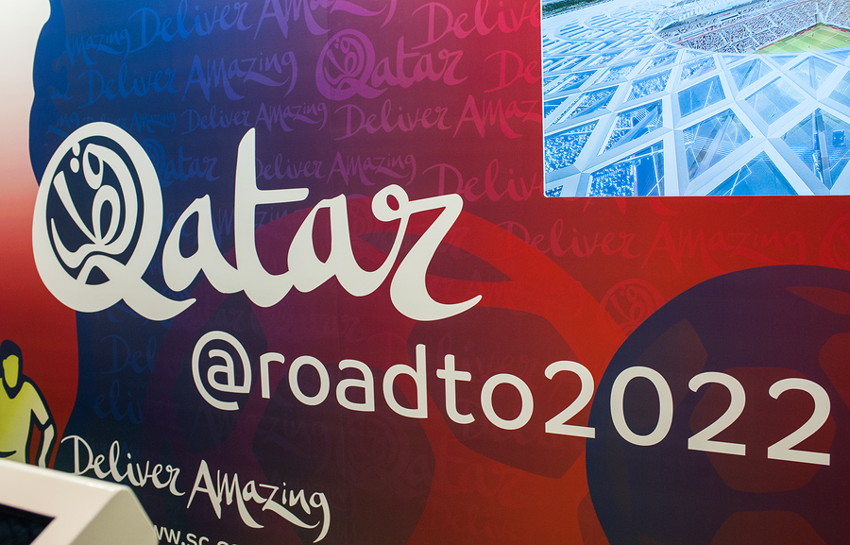
When the World Cup was in its more formative years, the host nation of each tournament was chosen during a meeting of the FIFA congress. As we mentioned before, these decisions weren’t always welcomed by the competing nations, with South American and European countries displeased by the amount of travel involved when travelling to play in a nation located in the opposite confederation. Back then it would often involve travel of up to three weeks on a boat, with plane travel not yet the popular form of moving from one continent to another that it is nowadays. That resulted in numerous South American countries boycotting tournaments hosted Europe and vice-versa when European sides were asked to travel to South America.
By 1958 FIFA had grown increasingly wary of their tournaments being boycotted, coming up with a pattern of alternating the hosting duties from Europe to South America and back again. This continued up until 2002, when South Korea and Japan became the first countries from Asia to host a World Cup and also the first nations to do so jointly. In 2010 the decision to award the hosting of a World Cup was awarded to an African nation when South Africa became the hosts. In 2014 Brazil became the first South American nation to host the World Cup Finals since Argentina did so in 1978, simultaneously ensuring that the competition was held outside of Europe on two consecutive occasions for the first time since its inception.
Nowadays the host country is chosen by a ballot system used by FIFA’s Council. Football associations hoping to host the tournament put forward bids that are looked at by the organisation. They then look at the bid and send inspectors to the country to check whether or not they meet the necessary requirements to be a host nation. The problem is that the ballot is currently done in secret, which has lead to accusations of bribery being thrown at FIFA and its representatives. We’ll explore that in more detail when we explore the corruption case later in this piece.
The nature of the new 48 team 104 game World Cup format is it naturally reduces the number of countries that could potentially host a tournament like that. Expect to see most future World Cup’s hosted only by groups of nations bidding together, or indeed entire confederations.
World Cup 30 Trivia Facts and Stats
 There’s something inescapably amusing and interesting about looking at trivia and stats around specific topic, with the World Cup being no exception.
There’s something inescapably amusing and interesting about looking at trivia and stats around specific topic, with the World Cup being no exception.
Here are some of the more fascinating aspects of international football’s showpiece tournament:
- The World Cup’s most successful manager is Vittorio Pozzo. (Italy 1934 & 1938)
- In previous years, coaches from Spain, Chile, Germany and other nations have banned players from having sex during the tournament
- Around 3.2 billion people around the globe watch the World Cup, making it the most watched sporting event with around 46% of people on the planet tuning in
- Birth rates tend to rise by around 10% in host countries
- Prior to 2026, 20 of the 22 World Cup final matches played had featured a European nation
- Brazil and Italy have won nine World Cups between them, which is just shy of 50% of all tournaments
- Brazil is the only nation to have appeared in every World Cup since the competition’s formation in 1930
- Brazil is also the most successful nation in the World Cup, having won the Jules Rimet five times. Italy and Germany have both won it four times
- Brazil are the only nation to have won back-to-back World Cups, doing so in both 1934 and 1938 and 1958 and 1962
- Germany have missed out more times than any other team, being losing finalists four times
- Oleg Salenko holds the record for most goals scored by a player in one match five in 1994 when Russia beat Cameroon 6-1
- Hungary has scored the most goals in a game by one nation, racking up ten against El Salvador in 1982
- The tournament’s highest scoring match occurred in 1954 when Switzerland lost 75 to Austria
- The most goals scored by a player in one tournament is thirteen, achieved by Just Fontaine for France
- The highest scoring qualifying match saw Australia beat American Samoa 31-0 in 2001
- The fasted goal scored at a World Cup Finals was after just eleven seconds. It was scored by Hakan Sukur in Turkey’s 32 win over South Korea in 2002
- Red and yellow cards were used for the first time in 1970 the same year that the World Cup was broadcast in colour
- The first time a red card was shown was in 1974 when Chile’s Carlos Caszely was sent off against West Germany
- The quickest red card was shown to Jose Batista for Uruguay after just fiftysix seconds in 1986
- The World Cup’s oldest goalscorer is Roger Milla. He scored for Cameroon against Russia in 1994 at the age of fortytwo
- Pelé is the most successful player, having won the World Cup three times
- The Brazilian is also the youngest scorer in and winner of the tournament, doing both when he was seventeen
- The tournament’s oldest winner is Dino Zoff, lifting the trophy with Italy in 1982 when he was forty
- Despite the name still being used, the Jules Rimet trophy was only used until 1970. Nowadays it’s simply called the FIFA World Cup Trophy
- The World Cup was stolen ahead of the 1966 tournament, being found by a dog called Pickles
- Italy, France, Brazil, Mexico and Germany have all hosted the World Cup Finals twice, with no country having done so three times until 2026 when Mexico co-hosted with USA and Canada.
- Uruguay in 1930, Italy in 1934, England in 1966, Germany in 1974 and France in 1998 are all teams that won the World Cup whilst also hosting the tournament
- Two sets of brothers have won the World Cup Fritz and Ottmar Walter did so with Germany in 1954 and Bobby and Jack Charlton did it in 1966 with England
- In 1970, Jairzinho made history by scoring one or more goals in every game of a World Cup Finals
- Antonio Carbajal (Mexico), Lothar Matthäus (Germany), Andrés Guardado (Mexico), Rafael Márquez (Mexico), Lionel Messi (Argentina) and Cristiano Ronaldo (Portugal) jointly hold the record for the most World Cup Finals appearances, having played in five tournaments each. Guillermo Ochoa (Mexico) and Gianluigi Buffon (Italy) have been in the squad for five tournaments but only played in 3 or 4 respectively. Interestingly 4 out of 8 of these players are Mexican, which says something about the longevity of their national team.
FIFA Scandals & World Cup Controversy
 We’ve made numerous references to it on this page and, unless you’ve been living under a rock, you’ll doubtless have a good sense of the controversy that rocked the footballing world in 2015. Still, it’s important to give the topic due consideration and explanation, especially as it will likely have an effect on the future of both the World Cup and the organisation behind it. We will do our best to keep this as succinct as possible, which isn’t easy considering the wide-ranging nature of the topic. If you’d like to know more about it then there’s plenty of information available from numerous sources.
We’ve made numerous references to it on this page and, unless you’ve been living under a rock, you’ll doubtless have a good sense of the controversy that rocked the footballing world in 2015. Still, it’s important to give the topic due consideration and explanation, especially as it will likely have an effect on the future of both the World Cup and the organisation behind it. We will do our best to keep this as succinct as possible, which isn’t easy considering the wide-ranging nature of the topic. If you’d like to know more about it then there’s plenty of information available from numerous sources.
The controversy largely centred around accusations of collusion between officials from the CONMEBOL and CONCACAF footballing bodies, as well as marketing executives. The latter held the marketing right for the likes of the FIFA World Cup and the Copa América, resulting in bribery, fraud and money laundering accusations being levelled at members of the footballing bodies in return for preferential treatment to certain sponsors. One sports sponsor, for example, was alleged to have paid upwards of $40 million in bribes in order to be the sole provider of sports clothing and football for the Brazilian squad.
Investigations into illegal behaviour dated back as far as 2010, when federal law enforcement began an undercover investigation that took advantage of cooperation of the American CONCACAF executive Chuck Blazer. The investigation led them to suspect bribery had been taking place over the selection process for host nations of the World Cup as far back as the 19990s. Blazer’s big mistake was to fail to pay taxes properly, resulting in him pleading guilty in November of 2013 to charges including money laundering and wire fraud conspiracy. As a result he would later record FIFA meetings secretly, causing the downfall of some of the organisations most corrupt members.
The accusations are so wide-ranging and incredible that it would be impossible to go over them all here, but one thing’s for sure – it’s unlikely that any World Cup has been awarded for nearly thirty years without some form of corruption involved. Take the awarding of the 2022 World Cup to Qatar, for example. In 2011 Phaedra Al-Majid, who had been part of the country’s bid team, game forward to claim that $1.5 million had been paid to Issa Hayatou, Jacques Anouma and Amos Adamu in order to ‘convince’ the Africans to vote for Qatar. Hayatou later admitted the claims against him were true, then two years later João Havelange, the former FIFA President, and Ricardo Teixeira, the President of the Brazilian Football Confederation, were both found guilty of taking millions of dollars worth of bribes.
In September of 2015, months after the FBI had raided the Hotel Baur au Lac in Zürich and arrested seven different FIFA officials who were getting ready to attend the organisation’s 65th Congress, Switzerland investigated a payment made by the President, Sepp Blatter, to the UEFA President, Michel Platini, for ‘work done’. Criminal proceedings were then started against Blatter, based on the idea of criminal mismanagement and misappropriation of funds. Blatter, along with Platini and FIFA Secretary General Jerome Valcke, was suspended from FIFA for ninety days on October 8th 2015, losing an appeal in the November of the same year. In December Platini and Blatter were banned from all football related activity for eight years by a FIFA Ethics Committee. Jerome Valcke was dismissed as Secretary General in January of 2016.
The World Cup and Corporate Sponsorship
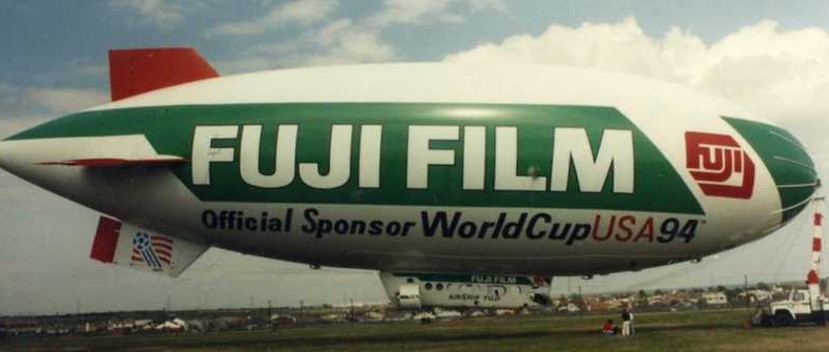
Corporate sponsorship is a relatively new thing, not only in football but across the sporting world. That is not to say that it’s never happened before – after all, watch a video of Diana Ross missing the goal with her penalty during the opening ceremony for the 1994 World Cup and you’ll see adverts for Pepsi and FujiFilm all over the place. Yet it’s unquestionable that such sponsorship deals from corporate giants went through the roof after the turn of the millennium. Around $1 billion dollars in global sponsorship was generated ahead of the 2010 World Cup in South Africa, with that figure jumping to about $1.65 billion when the tournament was held in Brazil.
What’s interesting is that sponsorships were severely limited ahead of the 2018 World Cup Finals. Around half a year before the draw for the 2014 tournament was even made, FIFA announced that its sponsorship program had ‘sold out’. Fast forward to the same point ahead of the Russia-based tournament and FIFA was actively seeking partners. Companies that had held long-term deals with FIFA, such as Coca-Cola and Visa, were still on-board, but others had anded their association in the wake of the corruption scandal. Only Qatar Airways, from the nation that would be hosting the following World Cup, Gazprom, the Russian energy firm, and Wanda Group, the property group from China – a country hoping to host future World Cup – had joined the organisation as ‘Partners’.
‘Partners’ are the companies that FIFA consider to be top-tier, with ‘Sponsors’ fitting into the net bracket. By December of 2017 only half of the Sponsor positions were taken up, with the likes of Castrol and Continental not having renewed their contracts with the organisation when they expired in 2015. None of that makes a huge difference to the average supporter, of course. National associations will still want to send teams to compete in the showcase tournament, meaning that the football will still be popular to watch for those at home. Yet a struggle to engage with sponsors is suggestive of an organisation that has lost its way. Patrick Nally, a marketing consultant who had worked with FIFA in the past, believes that a re-brand may be the only way forward.
He said,
“They keep saying it’s changed, but has it? They need to rekindle confidence and they’re not going to do that with the FIFA name”.
The Future of FIFA
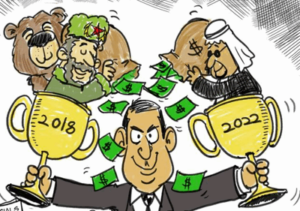 An Extraordinary FIFA Congress was held on the 26th of February 2016, during which Gianni Infantino, who had previously been the Secretary General of UEFA, was elected as the new President of FIFA. A major reform package was also passed, designed to clear house in the organisation and stop such blatant cases of corruption occurring again in the future.
An Extraordinary FIFA Congress was held on the 26th of February 2016, during which Gianni Infantino, who had previously been the Secretary General of UEFA, was elected as the new President of FIFA. A major reform package was also passed, designed to clear house in the organisation and stop such blatant cases of corruption occurring again in the future.
One of the chief things that the package ensured was a limit to terms in position of executive office, such as the Presidency of FIFA. Infantino was elected after a second round of voting over the matter of who would take charge of the organisation, eventually winning 115 votes and thereby defeating his nearest competitor, Salman Bin Ibrahim Al-Khalifa, who only received 88.
Infantino is believed to favour as much transparency as possible, specifically with reference to future bids on who should be the host nations. He wants those to be done in an open bidding process, meaning that everyone will be able to see who is voting for what. The question that faces FIFA, however, is about how many of the other executives within the organisation truly want such reforms. After all, it’s difficult to peruse the turkeys to vote for Christmas.
The future of FIFA remains very much up in the air at the time of writing, though if Infantino and those that support him are successful in cleaning house and ensuring a fairer, more transparent organisation in the future then it will no doubt lead to a more enjoyable experience for the entire footballing world.
The Future Of The World Cup
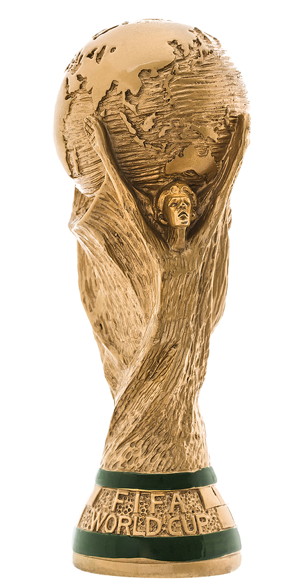 On the 10th of January 2017, the FIFA Council voted to change the format of the World Cup in order to allow forty-eight teams to play in it rather than the thirty-two that compete in it at present.
On the 10th of January 2017, the FIFA Council voted to change the format of the World Cup in order to allow forty-eight teams to play in it rather than the thirty-two that compete in it at present.
That will take place for the 2026 World Cup and onwards, with the 2018 and 2022 tournaments sticking with the thirty-two team format. Whilst on the one hand that will give teams from regions that have not previously been able to play in the tournament a chance to do so, on the other hand the reason that they haven’t appeared in previous World Cups is that they’re not very good.
Whether you’re looking at lesser African nations or teams from Oceania and Asia, they simply aren’t very good at football. As a result, the quality of the tournament is likely to be diluted at the same time that more games are going to have to be played. That will likely lengthen the period of time that the World Cup takes place over which will, in turn, impact on national divisions such as the Premier League, La Liga and the Bundesliga.
With the World Cup only taking place every four years and those competitions being played every single season, it’s difficult to see how long the organisations behind them will allow FIFA to impact upon the quality of them before trying to do something about it.
The future is impossible to predict, of course, but it’s easy to see a scenario whereby both players and their parent nations stop taking the World Cup seriously. If that happens then corruption will likely be the least of the problems when it comes to sponsors, who will be reluctant to put their name to a tournament that lacks quality.
The flip side of that, of course, is that FIFA may well realise that the expansion to forty-eight teams hasn’t worked and will attempt to revert back. Given that these decisions are made almost a decade in advance, however, it’s unlikely to be changed until choices about the 2038 World Cup need to be taken. All of that is, of course, dependent on FIFA as an organisation still being in existence at that stage.